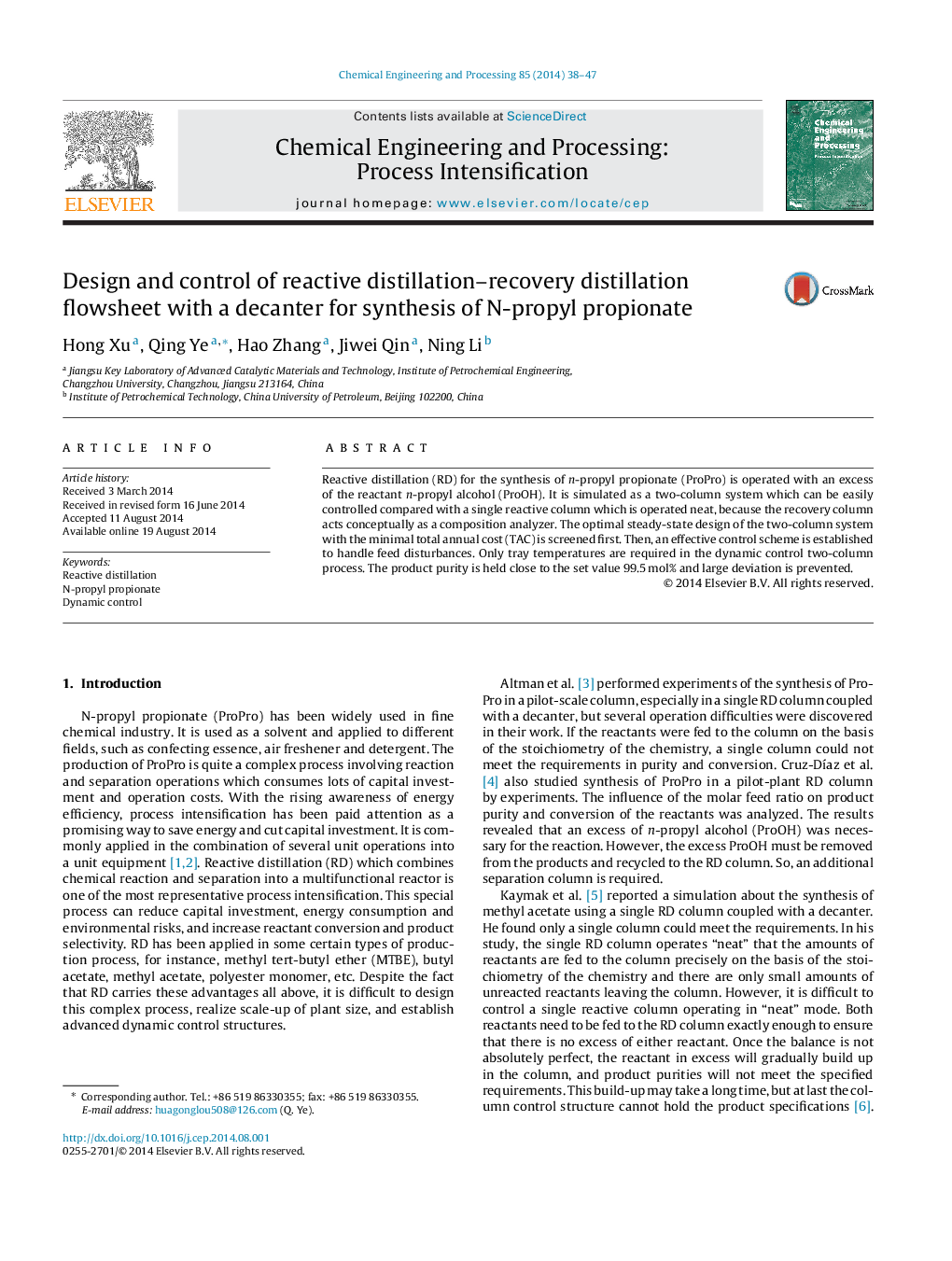| Article ID | Journal | Published Year | Pages | File Type |
|---|---|---|---|---|
| 686836 | Chemical Engineering and Processing: Process Intensification | 2014 | 10 Pages |
•The synthesis of n-propyl propionate is simulated by the two-column system.•The 2nd column acts conceptually as a composition analyzer.•The two-column system is easily controlled compared with a single reactive column.•The feed ratio disturbances are discussed.
Reactive distillation (RD) for the synthesis of n-propyl propionate (ProPro) is operated with an excess of the reactant n-propyl alcohol (ProOH). It is simulated as a two-column system which can be easily controlled compared with a single reactive column which is operated neat, because the recovery column acts conceptually as a composition analyzer. The optimal steady-state design of the two-column system with the minimal total annual cost (TAC) is screened first. Then, an effective control scheme is established to handle feed disturbances. Only tray temperatures are required in the dynamic control two-column process. The product purity is held close to the set value 99.5 mol% and large deviation is prevented.
